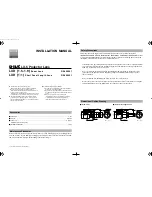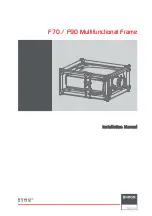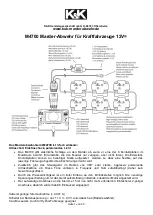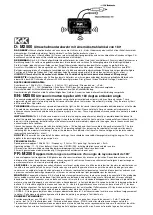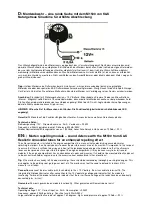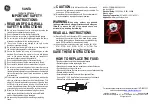
Efento SP. J.
Ul.Krupnicza 14/5
31-123 Kraków
the communication is encrypted cannot read any data sent by the sensor. Additionally, it is possible to
automatically turn off the Bluetooth Low Energy interface after the desired time from starting the sensor.
Thanks to this, it will not be possible to connect to the sensor using devices equipped with the Bluetooth
Low Energy interface.
Data transmission in the NB-IoT network is encrypted and therefore safe. The data security problem
appears at the stage of data transfer via the Internet - between the NB-IoT network and Efento Cloud /
user server. NB-IoT is based on the UDP protocol, which is supposed to be lightweight. Adding security
features to this protocol (e.g. encryption) increases the size of sent UDP frames, and thus the device's
battery consumption. The solution that ensures safe data transmission from the sensor to the server is
the use of an APN configured by the network operator and a secure tunnel (VPN) configuration between
the APN and Efento Cloud / client's server. Then the data is still sent using the light UDP protocol,
without increasing energy consumption, and thanks to the use of a tunnel, it cannot be eavesdropped on
during its transmission over the public Internet.
Power saving features
In order to ensure maximum battery saving, the sensor is set to PSM = 0, eDRX = disabled. This means
that the device will finish the transmission automatically after sending data to the server and (possibly)
receiving a new configuration from it. The device does not stay awake waiting for additional transmission
from the server. The only possible way to transfer data from the server to the sensor is to send them in
response to the data packet received from the sensor.
The NB-IoT standard provides for the retry of data transmission, if it is impossible to send it correctly.
The method of repeating the transmission is not configurable by the user, it is done automatically by the
sensor. The number of retries is determined by the ECL (Coverage Enhancement Level) parameter,
which specifies the number of retries of failed transmission attempts defined as 2
i
(i = 1… 7). The
parameter is set from 0 (normal operation) to 2 (bad signal quality / high noise, large number of
retransmissions required). The higher the ECL value, the higher the energy cost of sending data, and
therefore the shorter the battery life. When installing the NB-IoT sensor, it is worth checking the ECL
level in the place where it is to work (the issue is described in "Device status" section).
NB-IoT devices should not move between base stations, as this results in the need to re-register to the
network each time the base station changes. The registration process takes a relatively long time,
therefore frequent relocation of the sensor between base stations adversely affects the battery life.
Data usage
The amount of data sent and received by the sensor depends mainly on the measurement interval and
the transmission interval. For example, a sensor that measures only the temperature, performs a
measurement every 3 minutes, sends data every 3 hours, and four times a month sends data because
of exceeding the thresholds, consumes 60.5 kB per month. The same settings for a temperature and
| +48 574 753 980 | [email protected]


















